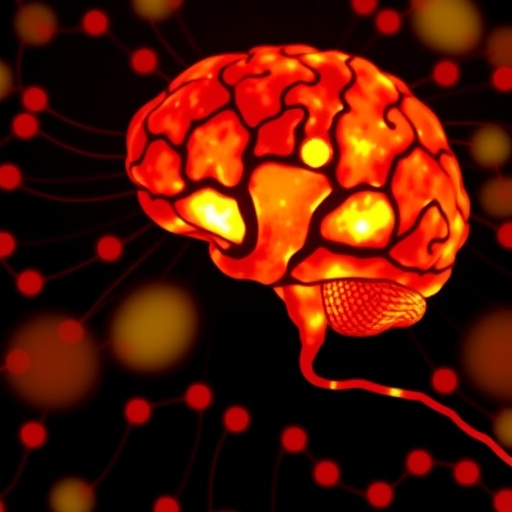Our brains do not only contain neurons, but also a variety of immune cells that play an important role for its functioning. A team led by Prof. Kiavash Movahedi (VIB Center for Inflammation Research at VUB) has developed a comprehensive cell atlas of the brain’s immune compartment. This revealed not only the striking diversity of brain macrophages, but also found microglia where they were not expected. Remarkably, these ‘hidden’ microglia showed a clear resemblance to microglia that are normally associated with neurodegenerative disorders such as Alzheimer’s disease. The new insights are important for better understanding the role of macrophages in healthy brain physiology and for developing future treatments for neurodegenerative diseases.
Immune cells in the brain
Macrophages – a type of immune cell – in the brain were first discovered 100 years ago by the Spanish scientist Pío del Río-Hortega. Most brain macrophages are known as microglia. These cells are in close contact with neurons and are critical for the proper development and functioning of the brain. But beyond the microglia, our brains house several other types of macrophages, many of which are relatively unknown.
Prof. Kiavash Movahedi (VIB Center for Inflammation Research, VUB): “While microglia are fairly well studied, other brain macrophages have remained quite enigmatic. We wanted to obtain a better understanding of these cells, as we believe they could be critical for regulating brain inflammation and immunity.”
Mapping gene expression in thousands of cells
To reveal the heterogeneity of macrophages across various brain regions, the researchers relied on a method for analyzing the gene expression of thousands of individual cells. In total, the researchers analyzed more than 60,000 single cells, which originated from healthy mouse brains, an Alzheimer’s disease mouse model, and from mice with an important genetic mutation that affected their immune system.
“The advent of single-cell RNA sequencing technologies has brought biology to the next level. We were lucky to closely collaborate with the group of prof. Yvan Saeys (VIB-UGent Center for Inflammation Research) and his expert bio-informaticians, as the proper analysis of this type of big data is not trivial,” explains Movahedi.
Fighting Alzheimer’s disease by controlling brain cells?
“Our results show that the appearance of brain macrophages can strongly vary depending on their anatomical niche, suggesting that they fulfill a broad set of functions” says Hannah Van Hove, PhD student and first author of the study. An unexpected finding was the presence of microglia that were sticking to the borders of the choroid plexus, a network of cells in direct contact with the cerebrospinal fluid. These choroid plexus microglia showed a similar activation state as microglia that come in contact with toxic amyloid deposits, a typical feature of Alzheimer’s disease.
“The challenge now is to elucidate the functions of this new class of microglia and to understand how this relates to the microglial responses that are observed during neurodegeneration”, explains prof. Jo Van Ginderachter (VIB Center for Inflammation Research, VUB), another macrophage expert involved in the study. The researchers now want to uncover the signals and environmental factors that underlie the occurrence of the various forms of brain macrophages. In doing so, they hope to find strategies for controlling their functions. Movahedi: “It is becoming increasingly clear that inflammation plays a central role in many neurological disorders, especially Alzheimer’s disease. We think that understanding the ins and outs of brain macrophages may be key for finally finding treatments for these diseases.”
Last week researchers from the VIB-KU Leuven Center for Brain & Disease Research also reported on the role of microglia for Alzheimer’s disease. This clearly illustrates the importance of more knowledge on this topic.
###
Publication
A single-cell atlas of mouse brain macrophages reveals unique transcriptional identities shaped by ontogeny and tissue environment, Movahedi et al., Nature Neuroscience 2019
Doi: 10.1038/s41593-019-0393-4.
Funding
This work was supported by Innoviris (Attract grant No. BB2B 2015-2) and Fonds Wetenschappelijk Onderzoek (grant No. 1506316 N) to K.M. and a VLAIO grant (No. ImmCyte HBC.2016.0889) to K.M, J.A.V.G., J.A. and D.M. H.V.H. is supported by an FWO predoctoral fellowship (No. 1163218 N). Y.S. is an ISAC Marylou Ingram Scholar.
Questions from patients
A breakthrough in research is not the same as a breakthrough in medicine. The realizations of VIB researchers can form the basis of new therapies, but the development path still takes years. This can raise a lot of questions. That is why we ask you to please refer questions in your report or article to the email address that VIB makes available for this purpose: [email protected]. Everyone can submit questions concerning this and other medically-oriented research directly to VIB via this address.
Media Contact
Sooike Stoops
[email protected]
http://dx.




